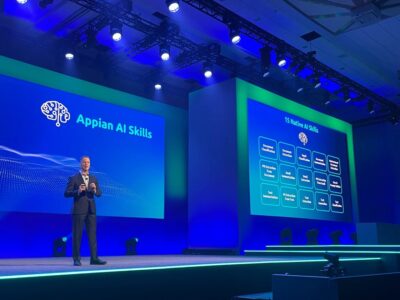
This editorial article is a part of Youth Building the Future Month of Technical.ly's editorial calendar. This month’s theme is underwritten by Verizon 5G. This story was independently reported and not reviewed by Verizon before publication.
When it comes to teens and technology, it turns out there’s a lot more on their minds than TikTok.
Between its ability to offer an in-demand career with benefits, program offerings and certifications that can be completed in-school and its ability to transfer into a college degree, students are among those look to gain the skills to build new technology. In fact, Lateefah Durant, VP of innovation for DC’s CityBridge initiative, told Technical.ly that students and young people in the DMV are on the lookout for tech careers.
“Young people are looking for opportunities for employment,” Durant said. “I think they have an understanding that the tech industry is growing and in-demand. They have an understanding that it offers opportunities and options that don’t exist in other career fields.”
Durant and CityBridge are the driving forces behind DC’s CityWorks program, which offers apprenticeships and resources for students. The three-year program facilitates apprenticeships for high school students and young adults, primarily those in 11th grade, with local tech companies such as Accenture.
Students start off working anywhere from 12-15 hours a week the first year, 16-20 hours in the second and close to full-time in the third. They also receive college credit. Following the program, Durant said students have enough certifications in IT to help them land a job, or they can continue on to college to become engineers, developers or take on other tech-adjacent roles.
CityWorks partners with local education agencies, which includes DC-area public, private and charter schools, who identify students that might be a good fit for its apprenticeship program. Students then apply for whatever internship or apprenticeship they’re interested in, and the employers make the final selection. CityWorks offered 14 apprenticeships in its first run last year, and is offering 45 this year, many of which are starting in the next 30 days.
Just because someone is in high school or because they're younger, doesn't mean that they can't add value to your organization.
“We don’t place students in an apprenticeship. It really is a hiring process,” Durant said. “We do some vetting on the front end, but at the end of the day, it is the employer’s choice who they want to bring in, who’s the best fit for their organization and for the skills that they need at the time.”
On top of the apprenticeship program, Durant said CityWorks moves on the policy and advocacy sides to help students learn about the multitude of tech careers available — and give them access to get there. This awareness, she noted, is a crucial aspect for students to stay in tech, and can have long-term effects on employment in the area.
But in order to get reach those goals, there’s a need for tech companies and schools to make it happen earlier than they might expect.
“Let’s go back to high school, let’s go back to middle school, let’s even go back to elementary school,” Durant said. “What are we doing to encourage young people, particularly young people of color and women to go into the IT sector? I don’t know that businesses often think about that backward mapping.”
This new frame of mind might have further implications on the talent pipeline and shortages in industries like cybersecurity. Durant encouraged companies to think about how they’re sorting their talent and consider whether or not they’re using the same pipelines and mechanisms they’ve always used.
Reevaluating what skills are necessary for a role and exploring new potential, even at the high school level, can help with the shortage and making sure women and BIPOC technologists are getting the same opportunities.
The way current employers need talent and young people are in need of a job, she said, makes it seem like there are two different employment pipelines working against each other.

Lateefah Durant (Courtesy photo)
“It’s almost like there are two pipelines and they’re parallel…but they’re not,” Durant said. “So how can we do a better job?”
What will help with this, Durant said, is engaging students in primary and secondary schools, be it apprenticeships, internships, guest speaking or job scheduling opportunities. She noted that it both benefits the students who might be interested in tech and makes good business sense when it comes to work-based learning building and developing a talent pipeline.
But mostly, she wants young people and students not to be underestimated when it comes to the tech workforce.
“There’s often this skepticism about our young people, there’s misconceived notions about our young people about what they can do and how they can add value to organizations,” Durant said. “What I want people to take away is just because someone is in high school or because they’re younger, doesn’t mean that they can’t add value to your organization, so it’s worth engaging with schools.”
Join the conversation!
Find news, events, jobs and people who share your interests on Technical.ly's open community Slack

DC daily roundup: Tyto Athene's cross-DMV deal; Spirit owner sells to Accenture; meet 2GI's new cohort

DC daily roundup: $10M to streamline govt. contracting; life sciences might dethrone software; Acadia's new $50M

DC daily roundup: the DMV's VC cooldown, SmartSigns for safer driving; Rep. Schiff's AI copyright bill


